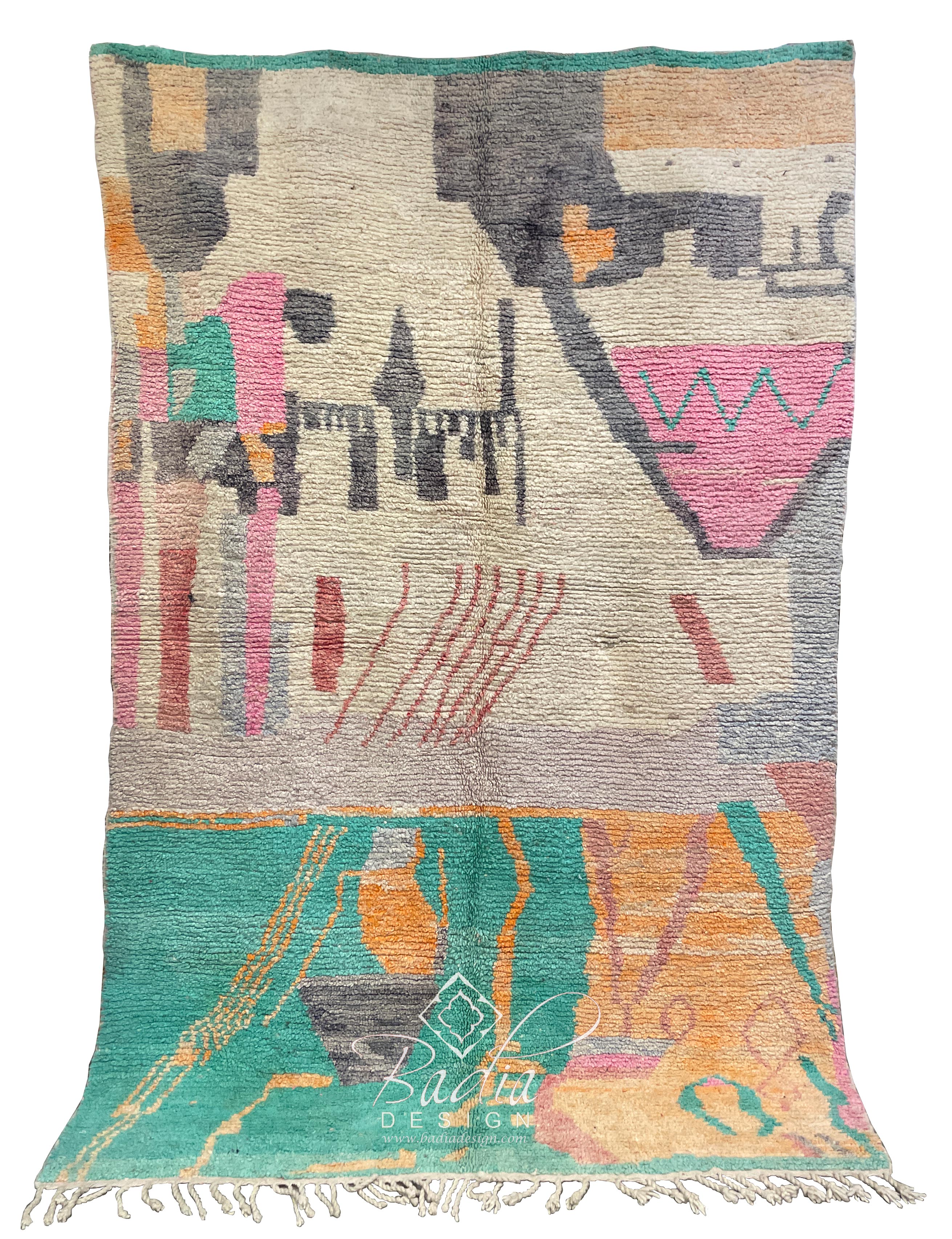Moroccan Berber Rugs: A Blend of History, Craftsmanship, and Timeless Style
These rugs have enchanted people across the globe with their deep cultural roots, remarkable artistry, and timeless design. These rugs can enhance any space, from a welcoming lounge to a sleek office environment. This guide delves into the rich origins of Moroccan Berber rugs, the meticulous craftsmanship behind their creation, their exceptional longevity, and creative ways to incorporate them into today’s interiors.
These rugs originated with the ancient Berber people of North Africa, dating back thousands of years. These indigenous groups, with their rich cultural heritage, crafted unique weaving methods to meet the demands of their migratory way of life and diverse climates.
Each Berber rug tells a story, often woven into the fabric that reflect the heritage of its creators. Motifs often symbolize concepts such as protection, nature, or fertility, giving each rug a profound heritage. Originally, these rugs were crafted for utilitarian purposes, such as providing warmth during harsh winters in the Atlas Mountains or acting as soft bedding in arid desert regions.
During the 20th century, these rugs were popularized by architects such as Le Corbusier and Frank Lloyd Wright, who used them in prestigious projects. Now, these rugs are highly sought after for their elegance and historical depth.
The production of Moroccan Berber rugs is an intricate process handed down through generations. This craftsmanship embodies a deep connection to heritage and artistry.
Berber rugs are typically crafted from natural materials such as sheep’s wool, camel hair, or even cotton. Wool stands out for being both durable and cozy, as well as for its thermal qualities. Artisans often hand-spin the wool, giving each rug a unique look and feel.
Berber rugs are handwoven on classic frames, a process that can take extensive time depending on the intricacy and dimensions of the design. The knotting style, from Beni Ourain’s plush textures to Azilal’s tighter weaves, dictates its overall quality and appeal.
Artisans rely on natural dyes from plants and minerals to produce the vivid tones seen in Berber rugs. Neutral shades dominate Beni Ourain designs, while brighter Azilal and Boucherouite pieces feature striking colors like red, blue, and yellow.
The longevity of these rugs is one of their standout qualities. This makes them a smart choice for both homes and businesses.
Berber rugs owe their longevity to the excellent quality of their natural fibers. Wool’s natural flexibility and resistance to stains make it a ideal choice for lasting rugs.
Taking care of these rugs is straightforward. Routine vacuuming and periodic professional care can preserve their beauty for decades.
How to Decorate with Moroccan Berber Rugs
Incorporating Moroccan Berber rugs into contemporary interiors is easier than you might think. Their versatile designs and textures can complement a wide range of styles, from minimalist to bohemian.
1. Create a Focal Point in the Living Room
A large Beni Ourain rug can serve as the focal point of your living area. Its neutral colors and simple geometric patterns can tie together various design elements while adding a sense of warmth and comfort.
2. Add Color to Neutral Spaces
If your space leans toward a monochromatic or minimalist aesthetic, a vibrant Azilal or Boucherouite rug can introduce a pop of color and visual interest. They are ideal for subdued settings, acting as the central highlight.
3. Combine Rugs for Depth and Style
For a cozy, eclectic vibe, layer a smaller Berber rug over a larger natural-fiber rug, such as jute or sisal. This combination not only adds depth and texture but also highlights the intricate details of the Berber design.
4. Elevate the Look of Offices and Workspaces
Businesses can use Moroccan Berber rugs to create an inviting and sophisticated ambiance in office spaces, lounges, or reception areas. The artisanal craftsmanship of these rugs radiates authenticity and refinement.
5. Display Moroccan Berber Rugs as Decorative Art
Certain Moroccan Berber rugs are so beautiful that they function wonderfully as wall art. Hanging a rug on the wall can add a unique touch to your home or business, showcasing the craftsmanship and cultural heritage of the piece.
Reasons to Invest in Moroccan Berber Rugs
For both homeowners and businesses, Moroccan Berber rugs represent a blend of practicality, aesthetics, and cultural significance. Their durability ensures a long lifespan, while their timeless designs can adapt to changing trends and tastes.
Eco-Friendly and Ethical Craftsmanship
Many Berber rugs are crafted using eco-friendly and sustainable practices. By investing in these rugs, you’re not only enhancing your space but also supporting traditional artisans and their communities.
The Appreciating Worth of Moroccan Berber Rugs
Vintage or unique Moroccan Berber rugs click here tend to grow in worth over the years. These rugs serve as both decorative items and investment-worthy collectibles.
